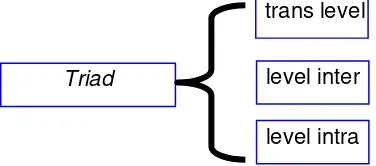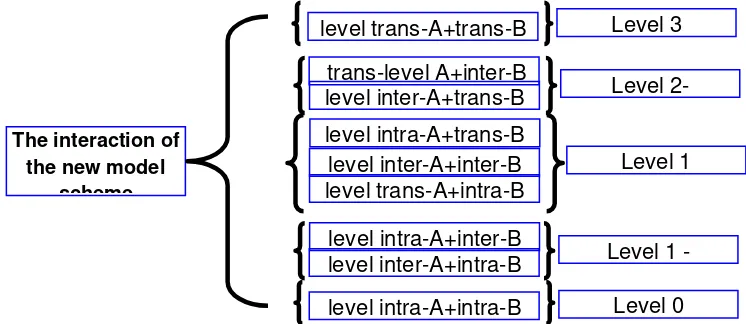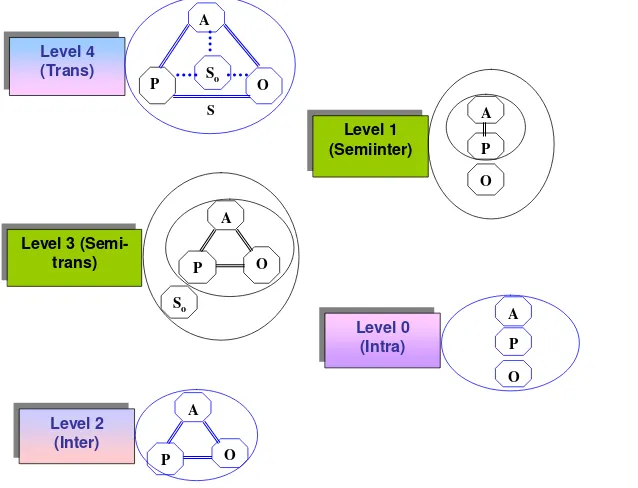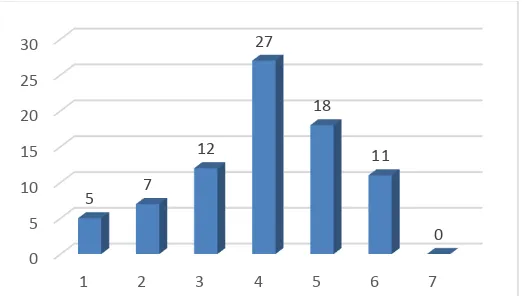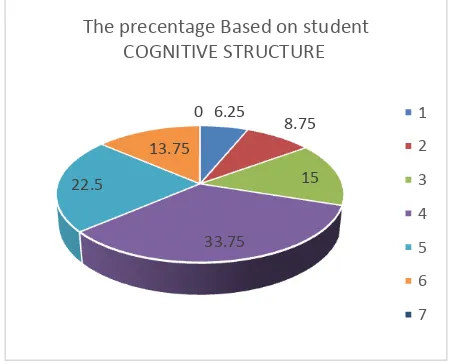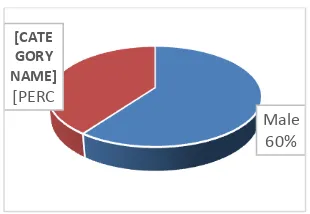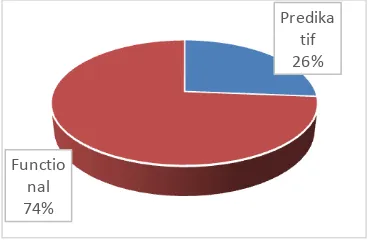–
DOI 10.22460/infinity.v5i2.215
83
PROFILE OF COGNITIVE STRUCTURE OF STUDENTS IN
UNDERSTANDING THE CONCEPT OF REAL ANALYSIS
Wahyu Widada
The Graduate study program mathematics education at the University of Bengkulu, Indonesia [email protected]
Received: May 24, 2016; Accepted: July 15, 2016
Abstract
The purpose of this research is to describe proil cognitive structure of students in understanding the concept of real analysis. This research is part of the research development of the theory of cognitive structure of students Mathematics Education Program at the University of Bengkulu. The results of this research are: 1)there are seven models decompositions of genetic students mathematics education reviewed based on the SRP Model about the concepts of Real Analysis namely Pra-Intra Level, Level intra, Level semi-inter, Level inter, Level semi-trans, Trans Level, level and Extended-Trans (only theoretic level while empirically not found); 2) There are six models decompositions of genetic students mathematics education reviewed based on KA about the concepts of Real Analysis namely Level 0: Objects of concrete steps; Level 1: Models Semi-concrete steps; Level 2: Models Theoretic; Level 3: Language in Domain Example; Level 4: Mathematical Language; Level 5: Inferensi Model. Profile of cognitive structure of mathematics education student at the University of Bengkulu is 6.25% Students located on the Basic Level (Pra-Intra Level with concrete objects), there is 8.75% Students located at Level 0 (intra Level with concrete objects), there are 15,00% Students located at Level 1 (semi-Level inter with Semi-Concrete Model), there are 33.75 percent students located on Level 2 (Level inter with theoretical model), there are 22.50 percent students located at Level 3 (Semi-trans Level with the Bible in Domain example), there are located on the student percent during the Level 4 (Trans Level with the language of Mathematics), and there are 0 percent students located at Level 5 (Level Extended-Trans with Inferensi Model). Students Education Mathematics at the University of Bengkulu pembangunnya element is functional can achieve Trans Level, students will be able to set up activities and make the algorithm that formed the concept/principles with the right. Functional students can also perform the process of abstraction using the rules in a system of mathematics.
Keywords: cognitive structure of the understanding of the concepts, profile
Abstrak
teoritis), terdapat 13,75% mahasiswa berada pada level 4 (level trans dengan bahasa matematika), dan terdapat 0% mahasiswa berada pada level 5 (level extended-trans dengan model inferensi. Mahasiswa Pendidikan Matematika FKIP Universitas Bengkulu yang unsur pembangunnya adalah fungsional dapat mencapai level trans, mahasiswa tersebut mampu mengatur, menyusun kegiatan dan membuat algoritma sehingga terbentuk konsep/prinsip dengan tepat. Mahasiswa fungsional juga dapat melakukan proses abstraksi dengan menggunakan aturan—aturan dalam suatu system matematika. Kata Kunci: struktur kognitif, pemahaman konsep, profil
How to Cite: Widada, W. (2016). Profile of Cognitive Structure of Students in Understanding the Concept of Real Analysis. Infinity, 5 (2), 83-98.
INTRODUCTION
The understanding of the concepts and mathematical strategic competence still considered optimal yet owned students (Afrilianto, 2012), and needs to be repaired through the implementation of appropriate learning methods (Darusman, 2014). To overcome this, the berbagai mathematics educators efforts in improving the ability learners in understanding the concepts of mathematics continues to be done. Dimaksdu efforts done start from the elementary education up to higher education. One of the efforts is the development of students mindset to be able to do the process of abstraction, generalisation and idealisation in the achievement of the concept of mathematics. Through the development of this mindset, students can define with both the concepts of mathematics with the pattern defining "name" concept is "genus proksimum" that "special distinguished". With the pattern defining, makes it easier for students to understand the concept of mathematics. The understanding of the concept of mathematics done system processing information students through the understanding of abstract ideas using media/objects of concrete steps to classified into the example/non-examples from the concept. According to the Hendriana (2012), konsep abstract concepts organized through think metaforik, stated in concrete things based on the structure and ways of reasoned based system of melting texture of the motor that is called with the conceptual metaphors. Widada & Herawaty (2016) stated that pemahaman about the concept of mathematics is the result of the construction or reconstruction of the objects of mathematics. Construction or reconstruction was done through the activities in the form of action mathematics, process, objects organized in a scheme to solve a problem. To know the understanding of the concept of students, can be done by analysis of the process of kongnitif students through an analysis of the genetic decompositions. Analysis of the genetic decompositions is a be from the theory APOS (Action, patterns, Object, and Schema) (Dubinsky, 2000). He said the APOS theory is a theory about how the possibility of continuous konstruktivis achievement/learning a concept or principle of mathematics which can be used as a elaborasi about mental construction of action, process objects and the scheme.
Hits Widada (2006), there are students of misconceptions about the concept of fractions. They have the misconception that every number that can be written in a/b with a,b numbers round
and b≠0 is fractions. Misconceptions are found in a scientific meeting prodi even written in
student bachelor theses, like 6/3 he call with fractions. But when asked what 2 fractions?", so too complex not fractions. This shows the extent of the inconsistency the conception is in the process of kognitifnya, when mention 6/3 fractions once asked about 2 that equivalent with 6/3, he answered not fractions.
The above conception, indicated that they dim between the concept of fractions with the concept of rational numbers. Should there are still constraints that must be met in order for the number of rational called with fractions, namely (a,b) = 1 or simply a not increments of b. This Constraint as diferensia spesifika (special distinguished) so that the association of rational numbers can be partitioned into two aggregate namely the association of round numbers and aggregate fractions (often called with the association bipartisi). This means that every fractions is the number of rational, but no rational numbers not fractions and numbers would round numbers.
The same thing was also found when the students met with the concept of the limit function. On the concept of the limit of f(x) for x near a, there are antecedents that 0<|x-a|<∂. They argue that more than 0 is not necessary because the absolute value of x-a sufficient (must have been more than 0). Even though the sign more than not only suggests that x of a more than 0,
but more than the x≠0. But not only was found also students who have no conception of the
limit function with -∂, moreover if we take on the concept of theneighborhood, then the students more trouble. This may indicate that the level of analysis of the student to interkoneksitas between absolute value scheme and the core of the concept of the limit itself has not been an integrated sequence. So to reach the mature scheme needed cognitive process that right. When this process is achieved, then the system processing information (short-term memory or working memory) will perform the task in the form of encoding to mature scheme about the concept of the limit function that is stored in a neurons in long-term memory. Mature schema which is stored is the main basic competency that can selectively-triggers the other competency components to be able to operate a performance that means.
The process of abstraction is a mathematics activity about the reorganization of the vertically (vertical mathematizing) from the object of mathematics that previous dikonstruk (previous schema) on a new structure. Mereorganisasi on the new structure of the objects of mathematics includes creating new hypothesis (conjecture), find or find back (reinvention) the object of mathematics is more complex and new strategies for problem resoursces'. Vertical Matematisasi is an activity placing objects of mathematics together, structured organized and developed on the objects of the other more abstract or more formal than originally. Idealisation occurs when we are dealing with an object that was not perfect (unperfect), and considered perfect. As the line, we image is not too straight, field of drawn not too flat, then the image of the line we assume that the straight path and image of our field flat. While generalisations is a process to find the object of mathematics (concept/principles) general, not just the conception that has not been accepted the truth in the structure of mathematics.
understanding of the concept of/principles cautiously. Therefore, in this article discussed about how the cognitive structure of students/students in understanding the concept in real analysis courses.
The structure of the knowledge representation is a development network/scheme about the fact, konsi cognitive things or situations that arise from an experience. The structure is the scheme, frame, or scripts. Each network can be mapped into a level in level-level triad (Piaget & Garcia, 1989). Based on the results of research grants researchers (Widada, 2010) a characteristic of the structure of the epresentasi knowledge (SRP) based on the level of a new level of triad (i.e. Extended Triad Level++). Competency grants researchers previous year (Widada, 2009) about the theory and the model of teaching mathematics based on the level of Triad++ obtained an additional new levels namely pre-level intra. The results of the earlier research as Fundamental Research (Widada & Herawaty, 2005; Widada, 2006), and the results of research Widada (2001, 2002, 2003, 2004), in the theoretic and empiric found that on pelevelan scheme structure (triad) students in learning mathematics, there is a new level in between the level intra and inter level i.e. semiinter level and there are new levels in between the level inter and trans level, namely semitrans level. This means that there are five development level student scheme in learn mathematics namely Level 0 (intra level), Level 1 (semi-level inter), Level 2 (inter level), Level 3 (Semi-trans Level), and Level 4 (trans level), and then pelevelan are named Level Triad+ (Widada, 2007). But in the real Analysis learning is to be interdicted by Widada. (2015), when reviewed based on the ability of abstraction students Mathematics Education Study Program at the University of Bengkulu, found the model of the structure of representation outside of the extended characters Level Triad++, one level student intra able to do abstraction until on the symbolic level. Research on, emphasized the structure of cognitive learners in understanding mathematics, which refers to the various reference about cognitive theory.
Cognitive theory sees the individual as an active information processing, so that the individual is able to represent any information in accordance with the level of knowledge and make it as a representation of the structure of knowledge in the form of frame, or in the form of the scheme, or a script to be stored in the memory (Beddely, 1998; Hunt & Ellis, 1999; Solso, 1995; Dubinsky, 1986, 1987, 1989, 1995, 2000; Dubinsky & McDonald, 2000; Dubinsky & Yiparaki, 2001; DeVries, 2000).
The results of research Widada (2001) about the development of student scheme in learn Calculus (especially the problem Graph functions and rounded up Takhingga) located on three levels that herarkis and functional. The sequence of the level-level is low level of intra as (level 0), inter level as middle level (level 1), and trans level as the highest level (level 2). This means that the knowledge of the students to the level of i contained in the knowledge level students to-(i+1), for I=0, 1.
Figure 1. TriadScheme Development
Triad
trans level
level inter
Based on the results of research on the Widada (2002) develop the same research about the model of the interaction during the scheme. Interaction Model the scheme referred to in the research is the model that is used to describe the data process ( completed) problems with level pairs from the triad (double triad). Double triad in the problems of the sketch of the graph of the function is the triad in pairs that bases the two different scheme, but both used in the scheme mensketsa graphs. Two schemes is a condition of the scheme function nature (property schema) given (the first instance, the second instance, limit, and kekontinuannya), and the interval scheme (interval scheme) on the domain (interval the interval near each other or overlap). Any scheme described separately, and then demonstrated in a pair of scheme interaction model. Data shows that in the mensketsa graph a function there are nine level scheme interaction double triad. Nine level interaction scheme are not clearly unordered sequence, only the lowest level (i.e. intra-property+intra-level interval) and the highest level (namely trans-property+trans-level interval) that can be seen clearly. While the level of the other level that is not sorted explicitly. Now the nine interaction level double triad intended scheme is as follows.
Figure 2. InterScheme action double triad
But from the research above seen that results from the interaction of the scheme double triad is not herarkis and functional, for that Widada (2003) examine about the interaction of the New Model scheme. The interaction of the new model scheme is defined as follows. E.g. to resolve a specific problem must involve interkoneksitas two different scheme, just mentioned the scheme A and scheme B, then there are five levels in the interaction of the new model scheme. Five levels to be ordered by remain, intra level as level 0, semiinter level as level 1, inter level as level 2, semitrans level as level 3, and trans level as level 4, pelevelan this can be seen in the Picture 1.3 follows.
Picture 3 The interaction of the new model scheme (ISMB)
Based on Widada (2004), the structure of the representation of the knowledge Student scheme based Mathematics Triad Level, so that obtained the network development of the scheme as follows.
Figure 4. Scheme Development Network
To develop the theory, then Widada perform Fundamental Research (2006) about the development of the theory of the development of the scheme (Triad Level+) about Calculus in Mathematics students. The results of the research is to be a network of development of student scheme as follows.
Figure 5. Image of the development of the appropriate network Scheme Level Triad+
If reviewed based on the ability of abstraction students Mathematics Education Study Program at the University of Bengkulu, and based on the explanation above literature study and observation during the lesson Real Analysis is to be interdicted by Widada T.A. 2014, then found the model of the structure of representation outside of the extended characters Level Triad++, one level student intra able to do abstraction until on the symbolic level. This suspicion toward the formation of a model of the structure of the new representation, i.e. the level above the trans with symbolic abstraction level.
METHOD
To answer the problem of research about "how profiles of cognitive structure of students/students in understanding the concept in real analysis courses?", research development of the theory of cognitive structure of students Mathematics Education Program at the University of Bengkulu. This model development research with two approaches. The first approach through research theoretic form of library research, through reflection, review and validation experts. The second approach through qualitative research and quantitative descriptive. In qualitative research done by the method of analysis of the comparison remains, with how to apply the theory of the Austrian Glaser proved & Strauss (1967), a teoretisasi process through the four stages. The main instrument in this research interviewer (in this case the researcher himself) and guided by other instruments in the form of the task sheet about the issues of the attributes of the Real Analysis courses, and guidelines interview. Each stage of the election of the subject directly conducted data collection process through the interview based on the task and continued with the analysis of the data (either genetic decompositions analysis). Based on the analysis of the data known to
Level 0 (Intra)Level 0 (Intra) Level 3
(Semi-trans) Level 3
(Semi-trans) Level 4 (Trans)Level 4 (Trans)
A
P So O
S
Level 2 (Inter)Level 2 (Inter)
A
P O
Level 1 (Semiinter)(Semiinter)Level 1
A
P
O O A
P
A
P O
the level of the Extended level Triad++ is fully charged and the level of the Extended level Triad++ that have not yet been fully charged.
RESULTS AND DISCUSSION
Based on the analysis of the research data obtained overview of cognitive structure profile mathematics education student at the University of Bengkulu reviewed based on the ability of abstraction in the formation of the concepts of Real Analysis Courses. Research Results of Revelation and the Widada & Herawaty (2016) concluded that there are seven models decompositions of genetic students mathematics education reviewed based on the SRP Model about the concepts of Real Analysis namely Pra-Intra Level, Level 0 (intra Level), Level 1 (semi-Level inter), Level 2 (Level inter, Level 3 (Semi-trans Level), Level 4 (Trans Level), and Level 5 (Level Extended-Trans, only theoretic level while empirically not found). The conclusions of the two (Widada & Herawaty, 2016), that there are six models decompositions of genetic students mathematics education reviewed based on KA about the concepts of Real Analysis namely Level 0: Objects of concrete steps; Level: Models Semi-concrete steps; Level 2: Models Theoretic; Level 3: Language in Domain Example; Level 4: Mathematical Language; Level 5: Inferensi Model. The conclusions of the three, there are seven models decompositions of genetic students mathematics education reviewed based on the model of the SRP and the KA about the concepts of Real Analysis namely Basic Level (Pra-Intra Level with concrete objects), Level 0 (intra Level with concrete objects), Level (semi-Level inter with Semi-Concrete Model), Level 2 (Level inter with theoretical model), Level 3 (Semi-trans Level with the Bible in the example Domain), Level 4 (Trans Level with the language of Mathematics), and Level 5 (Level Extended-Trans with Inferensi Model, but found students with the combination of the SRP levels and KA namely Trans Level with Inferensi Model.
The following could be served by one profile of cognitive structure of mathematics education student at the University of Bengkulu in chart form as has been disseminated in Semirata MIPA ((BKS West 2016 (Widada, 2016)). The explanation of the data analysis results are presented as follows.
Cognitive structure of students reviewed from the ability of abstraction in the formation of the concepts of Real Analysis
Figure 6. Frequency of students based on cognitive Structure
Description:
1) Pra-Intra level with concrete objects 2) Level intra with concrete objects
0 5 10 15 20 25 30
1 2 3 4 5 6 7
5 7
12 27
18
11
3) Level semi-inter with Semi-Concrete Model 4) Level inter with theoretical model
5) Level semi-trans with the Bible in Domain example 6) Level Trans with the language of Mathematics 7) The Extended Level-Trans with Inferensi Model
Figure 6 shows that the cognitive structure of 80 students mathematics education at the University of Bengkulu reviewed based on the ability of abstraction in the formation of the concepts of Real Analysis Courses can be mapped in the level of the following level. There are 5 students who are at the level of Pra-Intra with concrete objects, 7 students located on the intra-Level with concrete objects, 12 students located at the level of semi-inter with Semi-Concrete Model, 27 students located at the level of inter with theoretical model, 18 students located at the level of semi-trans with the Bible in Domain example, 11 students located at the level of Trans with the language of Mathematics and no students located at the level of Extended-Trans with Inferensi Model.
Based on the Figure 6 Frequency of students based on the structure of cognition, so it can be served the diagram circle cognitive structure of mathematics education student at Bengkulu Universotas as finances on Figure 7 following.
Figure 7. percentage Students Based On Cognitive Structure
Description:
1) Pra-Intra level with concrete objects 2) Level intra with concrete objects
3) Level semi-inter with Semi-Concrete Model 4) Level inter with theoretical model
5) Level semi-trans with the Bible in Domain example 6) Level Trans with the language of Mathematics 7) The Extended Level-Trans with Inferensi Model
Based on the Figure 7, obtained map cognitive structure of mathematics education student at Bengkulu University in the form of a percentage as follows: There is 6.25% Students located on the Basic Level (Pra-Intra Level with concrete objects), there is 8.75% Students located at Level 0 (intra Level with concrete objects), there are 15,00% Students located at Level 1
6.25
8.75
15
33.75 22.5
13.75 0
The precentage Based on student COGNITIVE STRUCTURE
1
2
3
4
5
6
(semi-Level inter with Semi-Concrete Model), there are 33.75 percent students located on Level 2 (Level inter with theoretical model), there are 22.50 percent students located at Level 3 (Semi-trans Level with the Bible in Domain example), there are located on the student percent during the Level 4 (Trans Level with the language of Mathematics), and there are 0 percent students located at Level 5 (Level Extended-Trans with Inferensi Model).
Cognitive structure of students reviewed from the ability of abstraction in the formation of the concepts of Real Analysis and Gender
According to the data from the cognitive structure of mathematics education student at the University of Bengkulu, can be reviewed based on sex (women). The results of the analysis can be presented as follows:
Figure 8. Frequency of students based on cognitive structure and Gender
Description:
1) Pra-Intra level with concrete objects 2) Level intra with concrete objects
3) Level semi-inter with Semi-Concrete Model 4) Level inter with theoretical model
5) Level semi-trans with the Bible in Domain example 6) Level Trans with the language of Mathematics 7) The Extended Level-Trans with Inferensi Model
Based on the Figure 8, cognitive structure of mathematics education student at the University of Bengkulu reviewed based on the ability of abstraction in the formation of the concepts of Real Analysis Courses and gender (women) can be mapped in the level of the following level. There are 3 male students and 2 students of women who are at the level of Pra-Intra with concrete objects, 5 male students and 2 students women located on the intra-Level with concrete objects, 2 students of male and female students 10 students located at the level of semi-inter with Semi-Concrete Model, 10 students of male and female students 17 located at the level of inter with theoretical model, 5 students of male and female students 13 located on the levels of semi-trans with the Bible in Domain example, 4 male students and 7 students women located in the Trans Level with the language of Mathematics and no students located at the level of Extended-Trans with Inferensi Model.
In accordance with the Image of cognitive structure frequency 1.4 mathematics education student at the University of Bengkulu reviewed based on the ability of abstraction in the
The frequency of Students Based On Sex
Male
formation of the concepts of Real Analysis Courses and gender (women), can be arranged the diagram circle each level as follows.
1) Pra-Intra level with concrete objects
Figure 9. Structure of Student Cognitive Pra-Intra Level with concrete Objects
Figure 9 Structure of Student Cognitive Pra-Intra Level with concrete objects shows that from the 5 students that is located at the level of Pra-Intra with concrete objects, there are 40 percent women and 60% man. This may indicate that the cognitive structure of students at Level Pra-Intra with concrete objects occupied by the majority of men with the difference in 20%, which means that there are differences in the structure of the student cognitive men and women on Pra-Intra Level with concrete objects.
2) Intra level with concrete objects
Figure 10. Cognitive Structure Level Student Intra with concrete Objects
Figure 10 Cognitive Structure Level Student Intra with concrete objects shows that from 7 students who are located on the intra-Level with concrete objects, there are 29 percent women and 71% man. This may indicate that the cognitive structure of students at Level Intra with concrete objects occupied by the majority of men with the difference that very far namely 42%. With this data obtained the conclusions that there is a difference between the very means student cognitive structure of men and women on the levels of Intra with concrete objects.
3) Semi-level inter with Semi-Concrete Model
Figure 11. Cognitive Structure Level Student Semi-inter with Semi-Concrete Model
Male 60%
[CATE GORY NAME]
[PERC
Male 71% Women
29%
Male 17%
Based on the Figure 11 Cognitive Structure Level Student inter with Model Semi-Concrete finances that from 12 students located on the semi-Level inter with Semi-Semi-Concrete Model, there are 83 percent women and 17% man. This may indicate that the cognitive structure of students at Level Semi-inter with Model Semi-Concrete occupied by the majority of women with the difference that very far namely 66%. Based on precentage can disimpulan that there is a difference between the very means student cognitive structure of men and women on the levels of semi-inter with Semi-Concrete Model, i.e. 83% is a student of women.
4) The inter-level with theoretical Model
Figure 12. Cognitive Structure Inter Level students with theoretical Model
Figure 12 Cognitive Structure Inter Level students with theoretical Model shows that from 27 students who are at the level of Inter with theoretical Model, there are 63 percent women and 37% man. This may indicate that the cognitive structure of students at the level of Inter with theoretical Model occupied by the majority of women with the difference that very far namely 36%. Based on precentage can disimpulan that there is a difference between the very means student cognitive structure of men and women at the level of Inter with theoretical Model, i.e. 63% is a student of women.
5) Semi-trans Level with the Bible in Domain example
Figure 13. Cognitive Structure Level Student Semi-trans with the Bible in Domain Example
Based on the Figure 13 Structure of Student Cognitive Level Semi-trans with the Bible in Domain Example finances that from 18 students located at the level of semi-trans with the Bible in Domain example, there are 72 percent women and 28% man. This may indicate that the cognitive structure of students at Level Semi-trans with the Bible in the example Domain inhabited by the majority of women with the difference that very far namely 44%. Based on precentage can disimpulan that there is a difference between the very means student cognitive
Male 37%
Wome n 63%
Male 28%
structure of men and women on the levels of semi-trans with the Bible in Domain Example, i.e. 72% is a student of women.
6) Trans level with the language of Mathematics
Figure 14. Cognitive Structure Trans Level students with the language of Mathematics
Based on the Figure 14 Cognitive Structure Trans Level students with the language of Mathematics finances that from 11 students located at the level of Trans with the language of Mathematics, there are 64 percent women and 36% man. This may indicate that the cognitive structure of students on the Trans Level with the language of Mathematics occupied by the majority of women with the difference that very far namely 28%. Based on precentage can disimpulan that there is a difference between the very means student cognitive structure of men and women on the Trans Level with the language of Mathematics, i.e. 64% is a student of women.
Cognitive structure of students reviewed from the ability of abstraction in the formation of the concepts of Real Analysis and Predikatif/Functional
Based on the analysis of the research data, cognitive structure of mathematics education student at the University of Bengkulu reviewed based on the ability of abstraction in the formation of the concepts of Real Analysis Courses and Predikatif/functional can be served in the circle diagram as follows:
Figure 15. Cognitive Structure Predikatif/ Functional mathematics education student at the University of Bengkulu
Based on the Figure 15, cognitive structure of mathematics education student at the University of Bengkulu reviewed based on the ability of abstraction in the formation of the concepts of Real Analysis Courses and Predikatif/functional there are as many as 74%
Male 36%
Women 64%
Predika tif 26%
functional pembangunnya elements and 26 percent students pembangunnya predikatif elements. It can thus be disimpukan that the majority of the cognitive structure of mathematics education student at the University of Bengkulu is functional.
In accordance with this indicator in accordance with the results of research Schwank (1993) and Widada (2015), mathematics education student at the University of Bengkulu pembangunnya element is functional can build connectedness between the action, process, objects and other scheme (do retrieval of the previous schema) so formed a mature scheme (mature scheme). The students are able to set up activities and make the algorithm that formed the concept/principles with the right. Students can perform the process of abstraction using the rules in a system of mathematics.
CONCLUSION
Based on explanation of research results above can be summarized as follows: 1) there are seven models decompositions of genetic students mathematics education reviewed based on the SRP Model about the concepts of Real Analysis namely Pra-Intra Level, Level intra, Level semi-inter, Level inter, Level semi-trans, Trans Level, level and Extended-Trans (only theoretic level while empirically not found); 2) There are six models decompositions of genetic students mathematics education reviewed based on KA about the concepts of Real Analysis namely Level 0: Objects of concrete steps; Level 1: Models Semi-concrete steps; Level 2: Models Theoretic; Level 3: Language in Domain Example; Level 4: Mathematical Language; Level 5: Inferensi Model.
Profile of cognitive structure of mathematics education student at the University of Bengkulu is 6.25% Students located on the Basic Level (Pra-Intra Level with concrete objects), there is 8.75% Students located at Level 0 (intra Level with concrete objects), there are 15,00% Students located at Level 1 (semi-Level inter with Semi-Concrete Model), there are 33.75 percent students located on Level 2 (Level inter with theoretical model), there are 22.50 percent students located at Level 3 (Semi-trans Level with the Bible in Domain example), there are located on the student percent during the Level 4 (Trans Level with the language of Mathematics), and there are 0 percent students located at Level 5 (Level Extended-Trans with Inferensi Model). Students Mathematics education at the University of Bengkulu pembangunnya element is functional can achieve Trans Level, students will be able to set up activities and make the algorithm that formed the concept/principles with the right. Functional students can also perform the process of abstraction using the rules in a system of mathematics.
REFERENCES
Afrilianto, M. (2012). Peningkatan Pemahaman Konsep dan Kompetensi Strategis Matematis Siswa SMP dengan Pendekatan Metaphorical Thinking. Infinity, 1(2)
Baddely, A. (1998). Your Memory A User’s Guide. London: Prion
Darusman, R. (2014). Penerapan Metode Mind Mapping (Peta Pikiran) untuk Meningkatkan Kemampuan Berpikir Kreatif Matematik Siswa SMP. Infinity, 3 (2)
Dubinsky, E. & Lewin,P. (1986). Reflective abstraction and Mathematical Induction: The Decomposition of Induction and Compactness. Journal Mathematical Behavior. Vol. 5 http: www.sciencedirect/science/journal/
Dubinsky, E. & McDonald, M. A. (2000). APOS: A Constructivist Theory of Learning in Undergraduate Mathematics Education Research.
http:/www.telri.ac.uk/CM/Paper.pdf
Dubinsky, E. (1987). Teaching Mathematical Induction. Journal Mathematical Behavior. Vol. 6 No. 1http: www.sciencedirect/science/journal/
Dubinsky, E. (1989). On Teaching Mathematical Induction II. Journal Mathematical Behavior. Vol. 8http: www.sciencedirect/science/journal/
Dubinsky, E. (1995). ISELT: A Programming Language for Learning Mathematics. Communications on Pure and Applied Mathematics. Vol. XLVIII
Dubinsky, E. (2000). Using a Theory of Learning in College Mathematics Course. Newsletter No. 12 http:/www.bham.ac.uk/ctimath/talum12.htm or http:/www.telri.ac.uk/
Dubinsky, E; & Yiparaki, Olga. (2001). Predicate Calculus and the Mathematical Thinking of Student . http://www.cs.cornell.edu/info/people/gies/symposium/dubinsky.htm Glaser, B. G. & Strauss, A. L. (1967). Discovery of Grounded Theory: Strategies for
Qualitative Research. Chicago: Aldine
Hendriana, H. (2012). Pembelajaran Matematika Humanis dengan Metaphorical Thinking untuk Meningkatkan Kepercayaan Diri Siswa. Infinity, 1 (1)
Hunt, R. R. & Ellis, H. C. (1999). Fundamental of Cognitive Psychology. Sixth Edition. Boston:McGraw-Hill College.
Piaget, J, & Garcia, R. (1989). Psychologies and the History of Science. http://www.piaget.org
Schwank, I. (1993). On The Analysis of Cognitive Structures in Algorithmic Thinking.
Journal of Mathematical Behavior. 12 (2), 209-231.
Solso, R.L. (1995). Cognitive Psychology. Boston: Allyn and Bacon.
Widada, W. & Herawaty, D. (2005). Studi tentang Dekomposisi Genetik Mahasiswa dalam Mempelajari Teori Graph (berbasis Triad Level). Laporan Penelitian Fundamental 2005.
Widada, W. (2001). Struktur Representasi Pengetahuan mahasiswa tentang Grafik Fungsi dan Deret Tak hingga. Artikel disajikan dalam Seminar Nasional Matematika II FMIPA UNNES Semarang 27 Agustus 2001.
Widada, W. (2002a). Skema mahasiswa tentang Sketsa Grafik Fungsi. Artikel dimuat dalam Jurnal Pendidikan Matematika dan Sains (JPMS) tahun VII No. 3, dan disajikan pada Seminar Nasional Hasil Penelitian MIPA yang Diselenggarakan oleh FMIPA UNY di Hotel Ambarukmo 28 Oktober 2002.
Widada, W. (2002c). Model Interaksi Skema mahasiswa tentang Permasalahan Grafik Fungsi pada Kalkulus. Artikel dimuat dalam Jurnal Matematika atau Pembelajarannya UM Malang Tahun VIII Juli 2002, dan disajikan pada Konferensi Nasional Matematika XI di UM Malang, 22-25 Juli 2002
Widada, W. (2002d). Sikel Pengajaran ACE: Membantu mahasiswa dalam proses mengkonstruksi matematika. Artikel disajikan dalam Seminar Nasional MIPA UM Malang berkerjasama dengan Japan International Cooperation Agency (IMSTEP-JICA) 5 Agustus 2002.
Widada, W. (2002e). Model Interaksi dari Beberapa Objek Matematika. Artikel dimuat dalam Jurnal Pendidikan Dasar dan Menengah Gentengkali. Vol. 4 No.1.2
Widada, W. (2003). Interaksi Skema Mahasiswa Model Baru tentang Permasalahan Grafik Fungsi pada Kalkulus. Laporan Penelitian Mandiri:Tidak dipublikasikan
Widada, W. (2004). Struktur Representasi Pengetahuan Mahasiswa tentang Deret Tak hingga (berbasis Triad Level). Laporan Penelitian Mandiri:Tidak dipublikasikan Widada, W. (2006). Dekomposisi Genetik Mahasiswa dalam Mempelajari Teori Graph.
Artikel dimuat dalam Jurnal Ilmiah Multi Science Inspirasi. Monograph II tahun 2006
Widada, W. (2007). Pengembangan teori perkembangan skema (triad level) tentang Kalkulus pada mahassiswa matematika FKIP UMB. diterbitkan dalam Jurnal Inspirasi V I tahun 2007.
Widada, W. (2009). Pengembangan Teori dan Model Pembelajaran Matematika Berbasis Level Triad++ untuk Mahasiswa Analisis Real (Studi di FKIP Universitas Bengkulu). Ditjen Dikti: Laporan Hasil Penelitian Hibah Kompetensi.
Widada, W. (2010). Pengembangan Lanjutan Teori dan Model Pembelajaran Teori Graph Berbasis Extended Level Triad++ untuk Mahasiswa FKIP Universitas Bengkulu. Ditjen Dikti: Laporan Hasil Penelitian Hibah Kompetensi.
Widada, W. (2015). The Existence of Students in Trans Extended Cognitive Development on Learning of Graph Theory. Jurnal Math Educator Nusantara. 1 (1), 1-20
Widada, W. & Herawaty, D. (2016). Dekomposisi Genetik Mahasiswa Pendidikan Matematika Ditinjau Berdasarkan Model Struktur Representasi Pengetahuan (SRP) dan Kemampuan Abstraksi (KA) tentang Konsep-konsep Analisis Real. Artikel dimuat dalam Prosiding Jambi International Seminar on Education. 3-5 April 2016.
